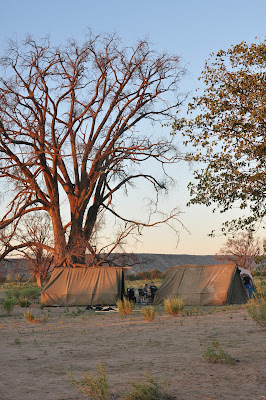Two hours later, we were off to the big store in Windhoek and then towards Himba Land.
The next morning, we woke up with the sun, the roosters, the donkeys, and the rest of Africa, and headed to Opuwo, the nearest city to our Himba tree (aka home for the next 5-6 weeks). We picked up one translator in Opuwo named Precious and then landed in the bush. We set up two ridiculously hard tents and then David and three others left back for Windhoek to return 2 of the trucks. It was kind of a funny situaton we were in. 9 American students left in the bush with no way to communicate with the people that would come and watch us for hours and basically jumping in to full Survivor mode. We make all of our meals over a fire and have no showers. We became very resourceful when we realized we had no pots for cooking and no can opener to open the giant can of baked beans. It was quite an adventurous 2 1/2 days. Thankfully on the third day, the rest of the crew arrived again and we felt at ease.





Comments
Post a Comment